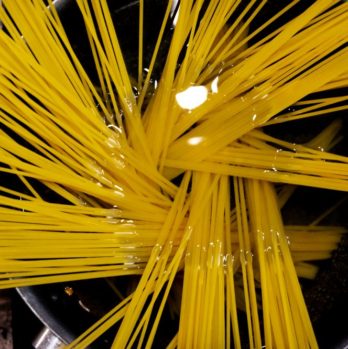Salami Chips: A Savory and Crunchy Delight for Snack Enthusiasts

Introduction:
Salami chips have become a popular snack among food enthusiasts, combining the savory taste of salami with the satisfying crunch of a chip. In this article, we will delve into the world of salami chips, providing a comprehensive overview of what they are, the different types available, their popularity, and how they differ from each other. Additionally, we will explore the historical background of salami chips and discuss the pros and cons associated with them.
What are Salami Chips?

Salami chips can best be described as thin slices of salami that have been baked or fried until crispy. They offer a unique twist on traditional chips, providing a meaty and flavorful alternative for those seeking a snack with a bit more substance. Salami chips can be made from various types of salami, such as Italian, Hungarian, or Spanish salami, each contributing its distinct taste to the final product.
Types and Popularity of Salami Chips
There is a wide range of salami chips available on the market, catering to different tastes and preferences. Popular varieties include:
1. Classic Salami Chips: These are made from traditional Italian salami and offer a balanced combination of spices and flavors.
2. Spicy Salami Chips: For those who enjoy a kick of heat, spicy versions of salami chips are available. These are often made with salami infused with chili peppers or hot spices.
3. Gourmet Salami Chips: Some brands offer gourmet variations of salami chips, using high-quality specialty salamis with unique flavors, such as truffle-infused salami or aged varieties.
Salami chips have gained popularity among snack enthusiasts due to their versatility and mouthwatering taste. They can be enjoyed as a standalone snack, paired with cheese and crackers for a charcuterie-style platter, or even used as a crunchy topping for salads and soups.
Quantitative Measurements of Salami Chips
When it comes to quantifying salami chips, it is essential to consider both their nutritional value and the sizes of the packaged options available.
1. Nutritional Facts: Salami chips are relatively high in fat and protein, making them a filling snack. However, it’s important to consume them in moderation due to their sodium content. On average, a serving of salami chips (about 1 ounce) contains around 120 calories, 10 grams of fat, and 6 grams of protein.
2. Packaging Sizes: Salami chips are typically sold in bags ranging from 2 ounces to 8 ounces, allowing consumers to choose the quantity that suits their snacking needs.
By being aware of the nutritional facts and portion sizes, individuals can enjoy salami chips as part of a balanced diet.
Variations and Distinctions in Salami Chips
While all salami chips share the common characteristic of being made from salami, there are key differences that set them apart from each other:
1. Flavor Profiles: Different types of salami yield distinct flavor profiles in the chips. Italian salami chips have a milder, well-rounded taste, while Hungarian salami chips often boast a smoky and robust flavor. Spanish salami chips may have hints of paprika or other regional spices.
2. Texture and Crunc The thickness of the salami slices and the cooking method employed can greatly influence the texture of the chips. Some brands produce thin and delicate chips that offer a crispy bite, while others create thicker and heartier chips that provide a more substantial crunch.
A Historical Overview of Pros and Cons
The concept of salami chips can be traced back to Italy, where the tradition of curing and drying meat has been practiced for centuries. Originally, salami was consumed as a whole sausage, sliced thinly before serving. However, the idea of transforming salami into chips emerged as a way to enhance its snacking appeal.
Pros:
1. Intense Flavor: Salami chips deliver a concentrated burst of flavors due to their dehydrated nature, allowing the spices and herbs in the salami to stand out.
2. Portable and Convenient: Salami chips are a portable snack that can be enjoyed on the go without the need for refrigeration or additional ingredients.
Cons:
1. Calorie and Fat Content: As mentioned earlier, salami chips can be high in calories and fat, making them a less suitable choice for those on strict dietary plans or with specific health concerns.
2. Sodium Content: Salami chips often contain a significant amount of sodium, so individuals with high blood pressure or sodium-sensitive diets should consume them in moderation.
Conclusion:
Salami chips offer a delightful and unique snacking experience for food enthusiasts. From their crispy texture to their diverse flavors, they have captivated the taste buds of many. Understanding the different types available, nutritional facts, and historical context can help individuals make informed choices when selecting and enjoying salami chips. So why not indulge in a bag of salami chips and savor the delicious combination of savory salami and satisfying crunch?











